Easy Shortbread Cookies
on Nov 12, 2021, Updated Jun 23, 2023
This post may contain affiliate links. Please read our disclosure policy.
In the world of best-loved cookies, it’s hard to beat simple, buttery, dense but flaky shortbread.

As part of a holiday cookie platter, sidling up to a cuppa tea, boxed up in a pretty package, it’s hard to beat simple, buttery, dense — and slightly crumbly– shortbread. This shortbread that is scored and docked and cut into triangles, with a bit of lemon added for interest. If you like Scottish Walker’s Shortbread, then this is the easy homemade version of that traditional cookie (or biscuit, as it’s known in England)! Apparently Mary, Queen of Scots, was very partial to this cookie, which is why it’s also known as Scottish shortbread.
The name shortbread refers to the high amount of butter in the dough making it a short dough. In baking and doughs, the word “short” means that there is a high percentage of fat to flour. More butter, more better.
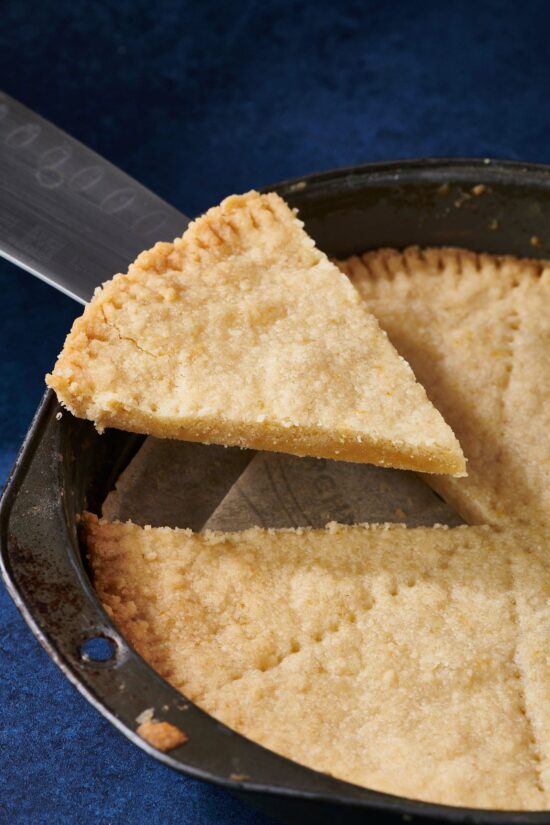
Tips for Making Great, Melt-in-Your-Mouth Shortbread
- Don’t overwork the dough, or the shortbread won’t be as tender
- Make sure the butter is soft, but not melted so that the shortbread retains its firm structure
- Make sure to refrigerate the dough before baking. This will allow the shortbread to bake up a little flaky, with a deep bite and also allow the flavor to meld a bit.
- Use your fingers or a spice jar to flatten the surface of the dough before baking which will give it a more polished appearance and encourage more even baking.
- Score (create lines for cutting the shortbread after baking) and dock (poke tiny holds in the surface) the dough before baking to prevent bubbles and buckling from occurring. These holes allow steam to escape.
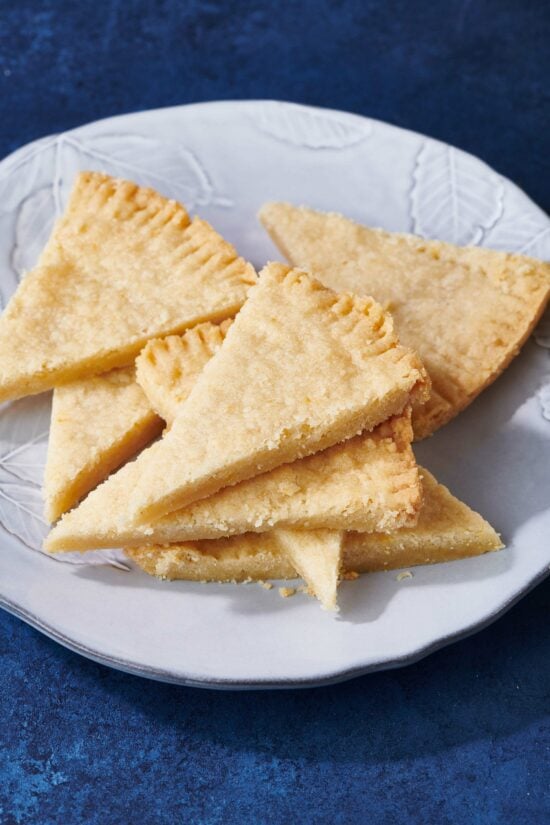
Lemon Shortbread Cookies
Dorie Greenspan, baker and cookbook author extraordinaire, suggests adding lemon zest for a boost of flavor. She advises using your fingers to rub the lemon zest with the granulated sugar and salt before combining with the rest of the ingredients to bring out the flavorful oils in the zest. Tiny extra step, great flavor results.
Easy Shortbread Cookies: In the world of best-loved cookies, it’s hard to beat simple, buttery, dense but flaky shortbread.
Tweet This
Shortbread will keep at room temperature in a tightly sealed container for up to 2 weeks. Well wrapped, it will keep in the freezer for about 4 months.
How to Make Shortbread
In a large mixing bowl, mix together the sugar, salt and lemon zest — use your fingers to rub the mixture together until you can really smell the lemon zest.
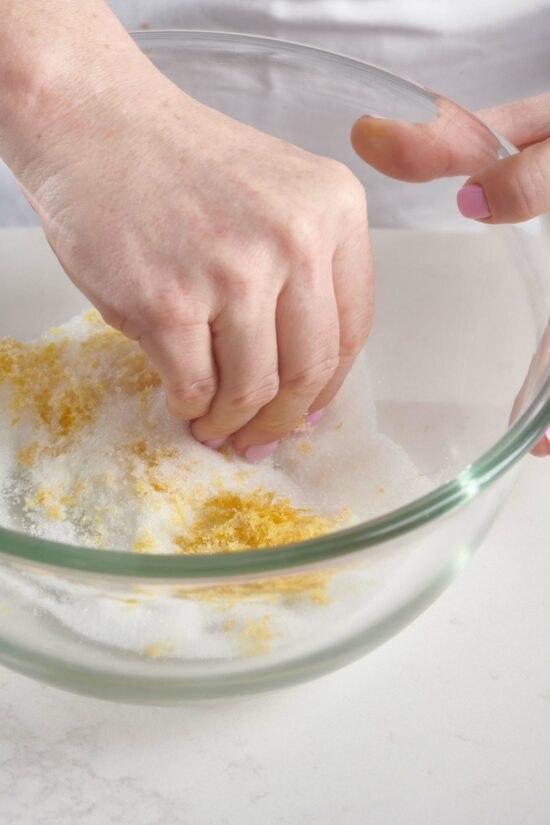
Add the butter and use an electric mixer to blend until well combined and fairly smooth; it won’t get very fluffy. Add the vanilla and blend, then add the flour and mix on low just until combined.
The dough should be soft and crumbly, and should just hold together when squeezed in the palm of your hand.
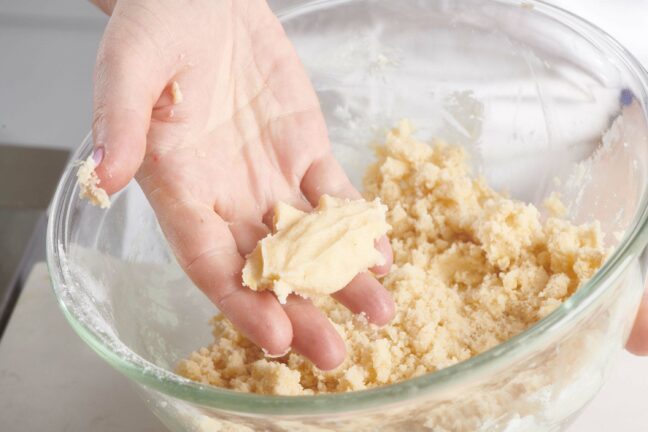
Transfer the crumbly dough into a greased 8-inch round cake pan. Pat the top as smoothly as possible, and then use a spice jar to roll the top gently until smooth, or pat it smooth with the bottom of a glass.

Use the tines of a fork to score the dough into wedges.
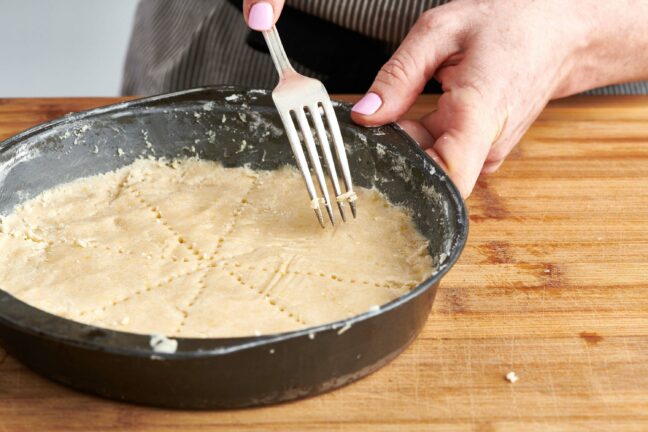
Use the back of the tines of a fork to make a border around the edge of the shortbread.
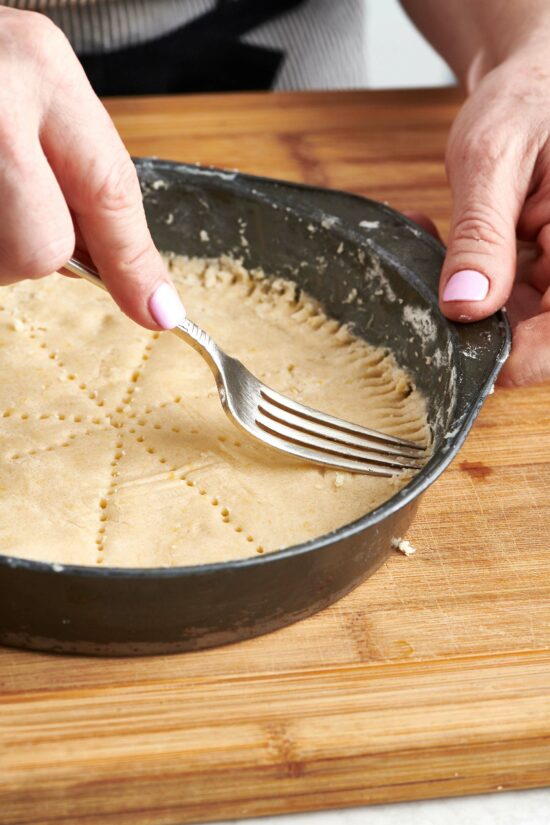
Bake at 350 degrees for 25 minutes. The shortbread will be very pale when it is done, barely more golden than it was before baking, with the edges ever so golden.
Cool the shortbread in the pan on a wire rack. Either cut the shortbread into triangles in the pan, following the scored lines, or carefully turn the shortbread out of the pan, then carefully flip it right side up onto a cutting board and slice along the scored lines.
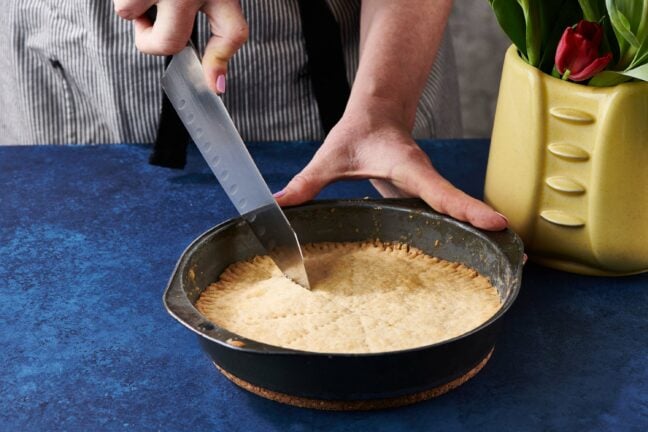
Shortbread Variations:
Mini Chocolate Chip Shortbread Cookies
If you’d like to mix in 1/2 cup mini chocolate chips after you blend in the flour, go for it!
Espresso Shortbread Cookies
Skip the lemon zest and blend in 1 teaspoon espresso powder.
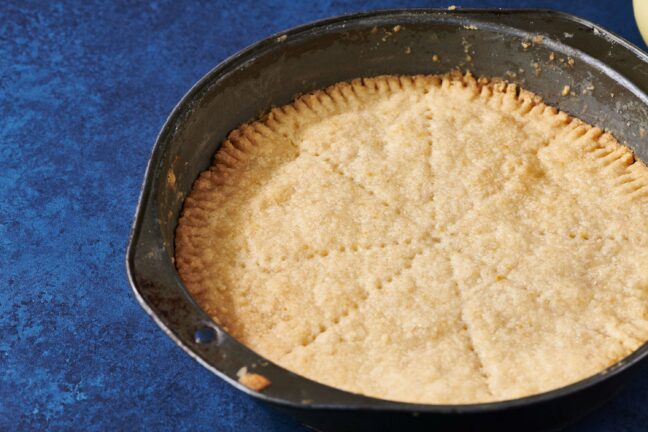
Other Holiday Cookie Recipes:
Pin this now to find it later
Pin It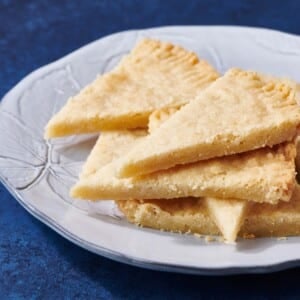
Easy Shortbread Cookies
Equipment
Ingredients
- ⅓ cup sugar
- ¼ teaspoon Kosher salt
- Finely grated zest of 1 lemon
- ½ cup (1 stick) unsalted butter , at room temperature
- 1 teaspoon pure vanilla extract
- 1 cup all-purpose flour
Instructions
- Preheat the oven to 350°F. Butter and flour an 8-inch cake pan.
- In a large mixing bowl, mix together the sugar, salt and lemon zest – use your fingers to rub the mixture together until you can really smell the lemon zest.
- Add the butter and use an electric mixer to blend until well combined and fairly smooth; it won’t get very fluffy. Add the vanilla and blend, then add the flour and mix on low just until combined. The dough should be soft and crumbly, and should just hold together when squeezed in the palm of your hand.
- Transfer the crumbly dough into the prepared pan. Pat the top as smoothly as possible, and then use a spice jar to roll the top gently until smooth, or pat it smooth with the bottom of a glass.
- Use the tines of a fork to score the dough into wedges. Use the back of the tines of a fork to make a border around the edge of the shortbread (see above for step-by-step photos).
- Bake for 25 minutes. The shortbread will be very pale when it is done, barely more golden than it was before baking, with the edges ever so golden.
- Cool the shortbread in the pan on a wire rack. Either cut the shortbread into triangles in the pan, following the scored lines, or carefully turn the shortbread out of the pan, then carefully clip it right side up onto a cutting board and slice along the scored lines.
Notes
- Don’t overwork the dough, or the shortbread won’t be as tender
- Make sure the butter is soft, but not melted so that the shortbread retains its firm structure
- Make sure to refrigerate the dough before baking. This will allow the shortbread to bake up a little flaky, with a deep bite and also allow the flavor to meld a bit.
- Use your fingers or a spice jar to flatten the surface of the dough before baking which will give it a more polished appearance and encourage more even baking.
- Score (create lines for cutting the shortbread after baking) and dock (poke tiny holds in the surface) the dough before baking to prevent bubbles and buckling from occurring. These holes allow steam to escape.









Easy recipe and delicious. I only used vanilla flavoring…yum!